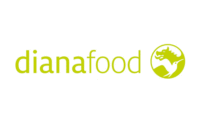Food R&D: Key Building Blocks
Prepared Foods’ R&D Application Seminar speakers showcase the functional basics and benefits of collagen proteins, enzymes, fibers, and more

SOURCE: @iStock/AnnaPustynnikova
Formulating with Gelatin and Collagen Proteins
Collagen proteins—gelatin, cold water-soluble gelatin and collagen peptides—are building blocks for innovative products. Pure proteins, derived mainly from pig and beef hide and bone, and subject to a quality-controlled process—these functional ingredients provide benefits to foods and pharmaceuticals.
Gelatin, with a relatively high molecular weight, is functional in gelling, water-binding, foaming, elasticity, emulsifying, film forming and viscosity. Collagen peptides with lower molecular weights are cold water-soluble; have no gelling properties; and are used in beauty-from-within products, bone and joint health products, and protein supplementation.
Gelatin and collagen peptides contain 18 different amino acids, including eight essential to the human diet, and especially notable in glycine (23.3%), proline (13.7%) and hydroxyproline (12.3%). Natural pure proteins, they are free from fat, cholesterol, carbohydrates, additives, preservatives and allergens.
Kevin Paulsen, specialty protein product manager at PB Leiner USA, speaking at Prepared Foods’ R&D Applications Seminars explained, “Gelatin has a unique property that it melts at body temperature, resulting in excellent flavor release and mouthfeel, while collagen peptides offer a highly digestible protein.” Confectionery and capsules currently are the biggest markets for these proteins, with expected growth.
“Gelatin is difficult to replace, with its melt temperature, thermoreversible gels, texture enhancement, flavor release and clarity,” Paulsen stated.
During whipping, gelatin increases viscosity around air bubbles for superior aeration, a stable structure and a more elastic texture than provided by other whipping agents. Paulsen also noted that gelatin is widely used to stabilize emulsions, such as in dairy spreads, thickened creams and salad dressings. However, gelatin, with its heating step, is limiting for some applications. There is a solution, however, which also opens up new applications.
Cold water-soluble gelatin does not require any thermal processing. It possesses the same functionality as standard gelatin, but is cold water-soluble, easy to use, and faster to prepare and to set. Cold water-soluble gelatin is used as a stabilizer at use levels of 0.5-2.0% in instant dessert mixes, mousses, creams, fillings and toppings. It is ideal for DYI kits, instant desserts, gummies, marshmallows, frozen entrees and milk shakes. Its fine particles give better dispersibility and faster dissolution than standard gelatin with no pre-blending.
“Collagen peptides, derived by enzymatic hydrolysis of gelatin, are cold- and warm-water-soluble, non-gelling, of neutral odor and flavor, clear in solution, and not affected by pH, salts or temperature. More than 15 types of collagen exist, with types I, II and III being the most abundant,” explained Paulsen.
Multiple applications of collagen peptides include beauty-from-within, bone and joint health, and sports nutrition, with beneficial effects on skin, bone, joints, muscle regeneration and weight management. Suitable for all applications, with a variety of grades, options and specifications, gelatin and collagen peptides are the building blocks for innovative products.
“Formulating with Gelatin and Collagen Proteins,” Kevin Paulsen, specialty protein product manager, PB Leiner USA, kevin.paulsen@pbleiner.com,
563-949-7490
—Summary by Elizabeth Pelofske, Contributing Editor
New Enzymes for Flavor & Food Applications
Enzymes have been used in foods and flavorings for centuries. Brian Murdoch, technical sales director–Midwest, for Enzyme Development Corporation, in his Prepared Foods’ R&D Application Seminar presentation titled “New Enzymes for Flavor & Food Applications.”
Yeast extracts, such as those used for flavor enhancement in reduced-sodium applications or as alternatives to monosodium glutamate, are cost- and label-friendly. Historically, enzymes such as protease, nuclease and lipase have been used to create yeast extracts. Now, a new enzyme of interest for yeast extracts is beta 1,3 Glucanase. Beta 1,3 Glucanase greatly reduces insolubles in both baker’s yeast and Torula yeast.
When beta 1,3 Glucanase GEL is combined with other enzymes (protease and nuclease), benefits seen include increased nucleic acid and amino acid yields for subsequent flavor reactions, thus increasing yeast extract yield. Re-utilization of the insoluble adds value to yeast cell wall leftovers. Beta 1,3 Glucanase is GRAS; halal- and kosher-certified; highly thermostable; and has low side activity.
In protein hydrolysis flavors, historically fast plant proteases (such as papain or bromelain), neutral bacterial proteases or flavor developing/debittering fungal proteases would be used.
“With increased function of pea, soy, wheat, hemp and dairy, new flavors have been developed from bitter to savory, umami, mushroom or meaty, etc...,” explained Murdoch.
Now, a new bacterial protease for protein hydrolysis is also available. A high-temperature, high-pH protease, it is stable for one hour at 180F and pH 12 for heavy hydrolysis amino acid production. This new, neutral protease for meat flavors also has been utilized for pet food flavors and seafood applications.
“Dipeptidyl-aminopeptidase, DPP/DPP IV” must be combined with another endo-protease,” added Murdoch. Exo-acting, it removes proline, accelerating protein hydrolysis, thus creating peptides for flavor reactions. Collagen peptides, meat flavors and vegetable protein hydrolysates are some of its products.
In dairy, enzyme modified cheeses typically have been made from cheese, using animal lipase and protease, fungal proteases and lipases, and bacterial proteases. A new aspartic acid protease made from the cardoon flower is now available for dairy cheese flavors. The cardoon flower, (Cynara cardunculus) has been used for more than 2,000 years, mostly in Portugal and Spain, in the production of sheep or goat cheese.
Murdoch asserted that the new aspartic acid protease produces unique cheese/dairy flavors or a fondue-like (enzyme-modified) cheese, at a lower temperature of inactivation.
Enzymes used in baking have always included amylases, lipases, xylanases and proteases. These enzymes aid in shelflife extension, softening, dough relaxation or tightening, and can help replace chemicals. A newly available glucose oxidase for baking is a non-GMO dough strengthener used at a 5–20ppm dosage. In meat hydrolysis and tenderizing, Murdoch stated that since the 1960-80s, the enzymes used have been papain, bromelain, neutral bacterial protease and fungal protease.
“In connective tissue, tenderness and toughness is principally a function of the amount and solubility of collagen covering the muscle fiber. Solubility decreases with age and also is related to exercise, diet and genetics of the animal,” Murdoch explained.
A new neutral collagenase, specifically for collagen and devoid of activity on myofibrillar proteins, reportedly works on insoluble collagen with benefits over traditional enzymes. It will not over tenderize meat, but upgrades lower quality cuts with long-refrigerated incubations/marinades.
“New Enzymes for Flavor & Food Applications,” Brian Murdoch, technical sales director-Midwest, Enzyme Development Corp., 212-736-1580, ext. 248,
Murdoch@enzymedevelopment.com
—Summary by Elizabeth Pelofske, Contributing Editor
Moisture Management in Meat without Sodium Phosphate
More and more, consumers want all-natural products with clean labels, short ingredient lists and no chemical-sounding ingredients. Third-party guidelines can be found from such places as Whole Foods, Trader Joes, Kroger’s and others (including, possibly, grandma’s cupboards).
When it comes to formulating for meat, this often means doing away with use of sodium phosphate.
“Sodium phosphate in meat,” explained Jon Falk, senior food scientist, Asenzya Inc., “performs many functions. Due mainly to increasing pH, sodium phosphate improves meat’s water-holding capacity. The increased ionic strength provided by sodium phosphate in meat also widens the gap in the actin myosin group (which allows more water to fit in this gap and be bound). As an emulsifier, sodium phosphate improves emulsion stability. It also binds divalent cations of calcium, magnesium and iron, helping to reduce oxidative rancidity, which contributes a warmed-over taste. Sodium phosphate also lowers the viscosity of meat and has a synergistic effect with sodium chloride.”
Some ingredients that are being used to clean up meat labels include milk proteins from nonfat dry milk or whey protein concentrates. Other proteins, such as soy, also are being added to meats in the form of soy flours, concentrates or isolates. Whole egg or egg powders, mustard flours or species-based ingredients (like broths or collagens) also have a place.
With some of these sodium phosphate replacers come allergen concerns, such as with milk, soy or egg. Carbohydrates also are used, including gums, carrageenan, starches, fibers, sweeteners, bread crumbs, cracker meal, and dehydrated vegetables and fruits. Sodium alginate, kappa or iota carrageenan, konjac, xanthan, guar and locust bean gum help retain moisture and control viscosity, but they do not replace all the functions of sodium phosphate. Modified starches can be helpful and can be chosen for specific properties, including particle size, source (potato, tapioca, rice), cold swelling or cook-up, and flavor impact.
Fibers hold significant amounts of water, and there are many choices—including citrus, corn, oat, pea, potato and rice. No two fiber ingredients work the same, with their differing insoluble and soluble levels, as well as different cellulose, hemicellulose, lignin and pectin levels. Concerns with fibers include mesh size, texture, flavor and labeling.
Other ionic compounds can replace sodium phosphate’s ionic function but also might not be considered clean—such as sodium citrate, sodium carbonate or potassium chloride. However, baking soda and sea salt are good clean label options.
Falk advised that it is a balancing act to clean up a meat label while considering labeling, cost, yield, mouthfeel and flavor.
“Keep in mind that yield or texture improvements through procedural changes also are good options—sometimes as simple as optimizing protein extraction. And time can be a key ingredient,” he added.
“Moisture Management in Meat without Sodium Phosphate,” Jon Falk, senior food scientist, Asenzya, Inc., 414-764-1220, jon.falk@asenzya.com
—Summary by Elizabeth Pelofske, Contributing Editor
Class is In: Gelita’s Collagen Protein College
Collagen is a family of pure proteins derived mainly from bovine and porcine hide and bone. Raw material sources are carefully audited and subject to stringent quality control. Collagen itself it partially soluble and, when exposed to heat and water, gelatin is the result. Gelatin is a warm water-soluble, lower weight molecular compound.
Further in the enzymatic process, cold water-soluble collagen peptides are formed. The molecular weight of collagen is originally greater than 250 kD, with gelatin in the range of 180 kD and collagen peptides down to less than 30 kD.
“Nutritionally, collagen pure proteins are fat-, cholesterol- and carbohydrate-free. A purely sourced, highly digestible and non-allergenic food, collagen pure proteins provide functional properties to a variety of applications and support clean label claims,” Ginger Waller, edible health and nutrition supervisor for Gelita informed the crowd at Prepared Foods’ R&D Applications Seminar.
Gelling, thickening, water-binding, emulsification, foaming, cohesiveness and adhesiveness, with compatibility in many food systems, are some of the functional benefits.
“The optimal melting properties of gelatin are desirable but depend upon concentration, bloom and viscosity, temperature, and the presence of other ingredients,” Waller discussed. Variables influencing gelatin dissolution include particle size, concentration, time and equipment constraints.
As a gelling agent, gelatin proteins were used to create protein-fortified gummies. The result was a familiar texture and mouthfeel with increased protein content, and reduced calories and carbohydrates. Aeration was the function of gelatin in whipped cream cheese, where it also replaced fat and calories, to increase volume of air and water. The whipped cream cheese had significant fat and calorie reduction, with a creamy texture.
Waller also stated, “Reduced-fat margarines and spreads benefit from gelatin as an emulsifier, replacing fat and calories with air and water, resulting in fewer calories, less fat and a creamy, smooth texture.”
In salad dressing, yogurt and sour cream, gelatin acts as a stabilizer (allowing no water separation) and has a smooth texture. It also mimics fat and is compatible with other hydrocolloids.
In frozen products, such as ice cream, gelatin controls crystallization; provides heat shock resistance; and helps maintain texture. Suitable in both cold and warm liquids, gelatin provides excellent foaming and emulsification. In bars, desserts and meats, it is gelatin’s binding and adhesiveness that add texture. Waller noted the positive interactions of gelatin with starch, pectin, carrageenan and gum Arabic.
Glucose syrup strengthens gels at low concentrations. Corn syrups at 42 and 62 DE are most common, with varying results depending on syrup used. Sucrose and polyols have a stabilizing effect on gelatin gels, increasing melt point and setting time, but they are not required to form gels.
Collagen peptides are more soluble than gelatin, with excellent digestibility, and they possess the ability to provide benefits on the musculoskeletal system. Collagen—the body’s protein—accounts for about 30% of the body’s protein content, as it is a major component of connective tissue, such as skin, bones, cartilage, tendons, ligaments and more. Many studies during the past decades have shown clinical evidence of their positive effect, particularly on mobility. (See chart “Collagen Peptides, Why Use Them?” for an extensive list of these studies.)
As for beauty, collagen is responsible for the mechanical strength of skin, being 70-80% of skin’s dry mass. Collagen loss begins slowly during a woman’s fertile years, increasing after menopause. “On average, a linear decrease of 2.1% collagen and 1.13% of skin thickness occurs in the period after menopause,” explained Waller.
Used topically, temporary improvement or short-term masking of skin conditions can be seen. However, when collagen is used from within—in the form of functional foods or nutritional supplements—a direct, significant and enduring positive effect on dermis and skin’s extracellular matrix is noted, said Waller.
“Class is In: Gelita’s Collagen Protein College,” Ginger Waller, technical services, edible health and nutrition supervisor, Gelita, ginger.waller@gelita.com, 712-943-0382
—Summary by Elizabeth Pelofske, Contributing Editor
Smarter Snacking
More consumers are snacking. Even so, they are wary of artificial ingredients and they prefer products with health boosting benefits beyond basic nutrition. Beneo’s IFT Booth #4023 will showcase a versatile portfolio of natural ingredients to improve a snack product’s nutritional profile and add proven health benefits.
Visitors can taste nutritious cereal and protein bars enriched with the prebiotic fiber inulin. One of them is gluten-free, has no allergens, and supports weight management. It is made with natural ingredients and contains only 2g sugar but 7g of fiber. By replacing high glycemic sugars, Beneo’s prebiotic chicory fiber and the slow-release carbohydrate, Palatinose, help support healthier metabolism, which effectively helps to manage weight.
— Beneo, www.beneo.com
Natural Food Safety
Naturex will use its IFT 2017 Booth #2457 to showcase Cleanatis, a new line of antimicrobials for natural food preservation solutions. Already masters in the natural preservation of color and taste in meat products, Naturex experts have developed new solutions for tackling growth of pathogenic bacteria. This new line includes two synergistic blends of natural extracts that prevent the development of major pathogens such as listeria and salmonella. With no impact on product taste, the blends can help meat manufacturers make a smooth transition to natural.
—Naturex, www.naturex.com
Whole Grains
BreadPartners has formulated an affordable and wholesome pre-cooked whole grain mixture, Reddi-Soaked Grains, which may be added on top of any existing formula. Reddi-Soaked Grains are clean label, Non-GMO, hydrated whole grains. This new product is perfect for various dough applications such as bread, rolls, pita bread, pretzels, pizza crust, croissants, bagels, baguettes and more.
— BreadPartners Inc., www.breadpartners.com
Egg Advantages
Manufacturers and their customer consumers demand a safe, nutritious and sustainable food supply. The American Egg Board (AEB) couldn’t agree more. Eggs provide a safe and nutritious supply of ingredients that can help achieve that goal. AEB has an equally abundant library of concepts and ideas that can help IFT visitors take advantage of egg functionality, flavor and versatility. Explore the possibilities and potential of egg ingredients at AEB Booth #1758. On hand to answer any technical or functional questions will be Shelly McKee, PhD., AEB technical advisor.
— American Egg Board, www.aeb.org
US Grown, PHO Replacement
Qualisoy will use this year’s IFT to showcase U.S.-grown, soy-based replacements for partially hydrogenated oils (PHOs). Qualisoy (Booth #2053) will show a virtual reality video that gives attendees a “first-hand” experience and look at U.S.-grown soybeans and the industry’s sustainable farming practices. Visitors also can watch Food Network star Chef Emily Ellyn fry doughnuts in enzymatically interesterified high oleic soybean shortening, and serve mini cupcakes made with the shortening. Food technologists can discuss the benefits of soy-based PHO replacements with oils experts Frank Flider and Richard Galloway.
— Qualisoy, www.qualisoy.com
Originally appeared in the May, 2017 issue of Prepared Foods as Key Building Blocks.
Looking for a reprint of this article?
From high-res PDFs to custom plaques, order your copy today!








